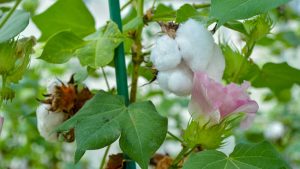When it comes to choosing fabrics, the debate between 100% cotton and 50/50 blends has been ongoing. Both options have their merits, but understanding the key differences and advantages is crucial in making an informed decision. In this article, we will delve into the intricacies of these fabrics, exploring their characteristics, benefits, and potential drawbacks. By the end, you will have a comprehensive understanding of whether 100% cotton is truly better than 50/50 blends.
- Understanding the Composition:
To comprehend the debate, we must first understand the composition of these fabrics. 100% cotton refers to fabric made entirely from cotton fibers, while 50/50 blends consist of equal parts cotton and polyester fibers. Each composition has unique properties that affect their performance and suitability for various applications. - Comfort and Breathability:
One of the primary considerations when choosing fabric is comfort. Cotton is renowned for its breathability, moisture-wicking properties, and softness against the skin. It allows air to circulate, keeping the body cool and dry. On the other hand, 50/50 blends offer enhanced durability and wrinkle resistance, while still providing reasonable breathability. The choice between the two depends on the specific comfort requirements of the intended use. - Durability and Longevity:
Durability is a crucial factor, especially for garments that undergo frequent washing or heavy use. While cotton is generally less durable than polyester, 50/50 blends combine the best of both worlds. The polyester fibers in the blend add strength and resilience, making the fabric more resistant to wear and tear. This makes 50/50 blends a preferred choice for workwear, uniforms, and other high-activity applications. - Maintenance and Care:
The ease of maintenance is another aspect to consider. Cotton fabrics are relatively easy to care for, as they can be machine washed and dried without much fuss. However, they may shrink or wrinkle more than 50/50 blends. On the other hand, 50/50 blends are less prone to shrinking and wrinkling, making them ideal for those seeking low-maintenance garments. - Environmental Impact:
Sustainability and environmental impact are increasingly important considerations for consumers. Cotton, being a natural fiber, is biodegradable and renewable. However, its production requires significant amounts of water and pesticides. Polyester, a synthetic fiber derived from petroleum, has a larger carbon footprint but can be recycled. The choice between the two depends on personal values and priorities.
Conclusion:
In the battle between 100% cotton and 50/50 blends, there is no definitive winner. Each fabric has its own strengths and weaknesses, making them suitable for different purposes. 100% cotton excels in comfort and breathability, while 50/50 blends offer enhanced durability and low maintenance. Ultimately, the decision should be based on individual needs, preferences, and the specific application of the fabric. Whether you prioritize comfort, longevity, or sustainability, understanding the characteristics of these fabrics will empower you to make an informed choice.



+ There are no comments
Add yours